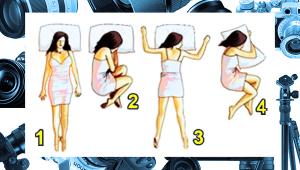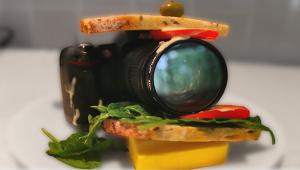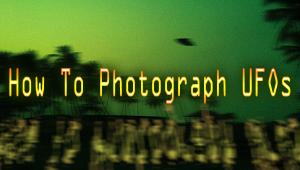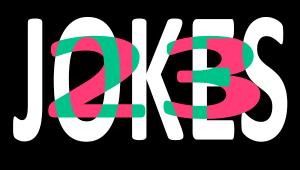Tough Photo Quiz for Hardcore Camera Nuts Only

Here are a dozen words or phrases that relate to photography. How many of them can you define or explain? Warning: this is not a multiple guess test, so you gotta really know your stuff to get all of them right.
How do the following words or phrases relate to photography?
Kojak with a Kodak
Waterhouse Stop
Ground Glass
Newton’s Rings
Zuiko, Takumar and Rokkor
Camera Obscura
Microdol-X
Film Leader
Kelvin
Panchromatic
TLR
Casey, Crime Photographer
Don’t cheat! No using Google.
Answers:
Kojak with a Kodak
Kojak was the name of a mid-1970s television crime drama and the surname of the protagonist played by Telly Savalas. The Kodak part denotes camera, or in this specific case, a code word for a radar speed gun. Put it all together and Kojak with a Kodak was a phrase used by Midwestern truck drivers (and others) to identify a law enforcement officer who was running radar.
Waterhouse Stop
Primitive system of changeable apertures that consists of holes of various sizes perforated through thin sheets of metal or other durable material. The openings usually correspond to the f/stop of a given lens. Lensbaby users will recognize the thin round disks that resemble washers that are used on some Lensbaby products.
Ground Glass
Ground glass might be something you don’t want to find in your hamburger, but in this case the term refers to the sheet of glass that has been abraded so that an image forms on it when a camera is focused. The term has come to mean plain or unadorned focusing screen for SLR cameras but it was used originally to describe the focusing plate in a view camera.
Newton’s Rings
Newton got around, that’s for sure. Newton’s Rings describe the iridescent rainbow-colored interference pattern that appears sometimes when two sheets of glass are sandwiched with a minute amount of space (air) between them. This was a huge problem for glass slide mounts until a partial solution was devised.

Zuiko, Takumar and Rokkor
These are the names of the proprietary lens lines offered by Olympus, Pentax and Minolta back in the film days. These brand names are still in use today, except for the dearly departed Rokkor series.
Camera Obscura
In essence, a gigantic pinhole camera. A Camera Obscura is a box that has a very tiny opening or glass lens on one end through which the image of an object is projected onto the opposite side. The appearance of the sharp image occurs more-or-less naturally, thanks to the laws of physics (provided that the opening is an appropriate distance from the opposite side). This contraption contributed to the invention of the still camera.
Microdol-X
A fine grain film developer sold by Kodak. Popular in its day, the product is no longer available; however, some self acclaimed near-clones are currently on the market. Back in the day, this was my favorite soup for Panatomic-X.
Film Leader
The short section at the beginning of a roll of film that is used to load and wind the film onto the take-up mechanism of a camera. In the case of 35mm film, the leader is tapered to fit the camera’s take-up spool. The leader on a roll of 120 roll film is paper.
Kelvin
Kelvin is a temperature scale which is based on theoretical Absolute Zero being equivalent to about -273º Celsius. In photography it’s used to identify the color temperature of light. Indoor household room lights are low, around 3200, whereas noon daylight is about 5500. Your high-end DSLR may have a Kelvin option in the White Balance menu. Tip: if you work in an office that uses fluorescent lighting, change the tubes to 5000K. They are not very expensive and they make a world of difference.
Panchromatic
Chromatic, of course, means “color.” Derived from a Greek word, pan means “everything” or “all,” so when Panchromatic is used to describe photographic film, it indicates that the film is sensitive to all colors of light. This was an important distinction in the early years, because some popular film was Orthochromatic—i.e., not sensitive to red light. It could therefore be processed visually (so-called “by inspection”) under a red safelight, but rendered the color spectrum incorrectly.
TLR
Now there’s a tough one if you’re under 40. Just as SLR means Single Lens Reflex, TLR means Twin Lens Reflex. Rolleiflex, Yashica and many other companies manufactured 120 roll film cameras that used one lens for viewing and a second, higher quality lens, for the actual image formation. The lenses were locked in the same plane so that when the top lens was in focus, so was the bottom.
Casey, Crime Photographer
If you listen to old-time radio programs on Sirius/XM as I do, you recognize the name of the radio show that aired in the 1940s and ‘50s. Casey also appeared in comic books, and a variation of the show had a brief fling on TV. The hero was a news photographer with a penchant for getting into trouble. My favorite Casey actor was Staats Cotsworth.
—Jon Sienkiewicz
- Log in or register to post comments





















































